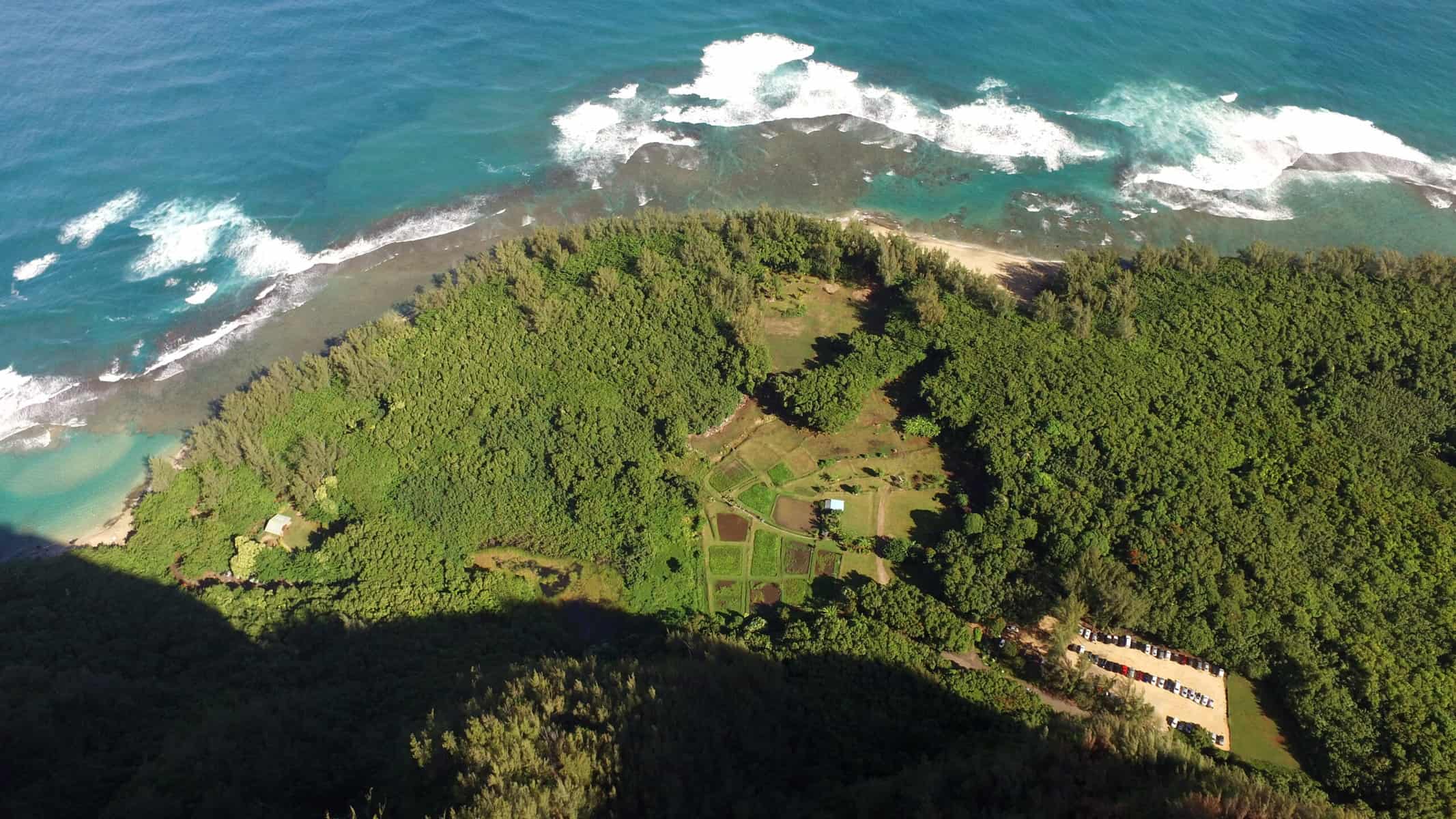

Photo: Haena State Park offers swimming at Kee Beach, as well as views of restored taro fields, ancient sea caves and access to the 11-mile Kalalau Trail. Newer access rules aim to prevent environmental and cultural degradation and ease the impact of overtourism. (Courtesy: DLNR/2019)
New crowd control and parking enforcement measures at Haena could help bring special places back into balance statewide.
Until recently, the average daily visitor count at Kauai’s Haena State Park was 3,000, making it as notorious for crowds and traffic as for its celebrated end-of-the-road lagoon.
For decades residents here felt edged out. Enough was enough when the lone residential road that feeds into the park had grown so littered with illegally parked cars that emergency responders couldn’t pass through.
A redesigned Haena State Park debuted in mid-2019, boasting experimental crowd control measures, such as a 900-person daily visitor cap, an advanced reservation shuttle system and increased law enforcement. Officials say Haena has since become a case study in how to stave off over-tourism, not only for the benefit of local residents and the delicate natural resources but for the enjoyment of the tourists themselves.
On Thursday the state enacted a new tool to further bolster Haena’s community-led, government-supported park stewardship system when Gov. Josh Green signed a bill into law that grants the Hawaii Department of Land and Natural Resources the flexibility to enter into long-term contracts with place-based nonprofits to operate parking reservations and concessions at certain state parks.
Haena State Park is the proving ground for such cooperative agreements, illustrating how a unique collaboration between the DLNR and the nonprofit Hui Maka‘ainana o Makana can boost revenue for the state parks special fund while creating dozens of new jobs for local people.
New crowd control measures modeled after those in Haena have already been implemented at Waianapanapa State Park on Maui, Diamond Head State Monument on Oahu and Iao Valley State Monument on Maui. The Big Island’s Kealakekua Bay State Historical Park is in the early stages of developing a tourism management system based on the success story at Haena.
DLNR Chairwoman Dawn Chang said the agency is seeking other communities who want to work hard and work collaboratively with state government to address overtourism hotspots.
Hui Maka‘ainana o Makana won a revocable permit, subject to annual renewal, to manage the […]
Full article: www.civilbeat.org
Clean water is essential for life, yet millions of Americans unknowingly consume contaminants through their…
Human brains contain higher concentrations of microplastics than other organs, according to a new study, and the…
From the Office of the Governor: In anticipation of a multi-day, significant atmospheric river in Northern California,…
From Governor Newsom: Scientists, water managers, state leaders, and experts throughout the state are calling…
Photo: A harmful algal bloom in Milford Lake, Kansas, made the water appear bright green.…
An expanded plastic foam coffee cup is at a donut shop in Monterey Park, California.…